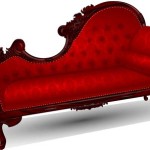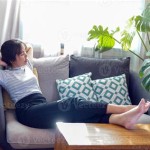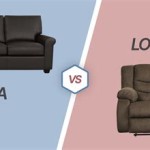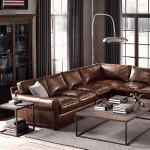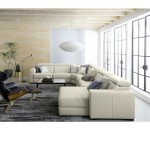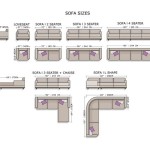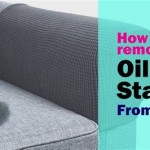Chesterfield Sofa: A Deep Dive into Antique Leather Aesthetics
The Chesterfield sofa, a timeless symbol of British elegance and enduring craftsmanship, occupies a prominent position in the world of antique furniture. Its defining features, including deeply buttoned upholstery, rolled arms, and a low back, have remained largely unchanged for centuries, cementing its status as a design icon. While various materials have been used in its construction, the antique leather Chesterfield sofa stands out as a particularly desirable piece, embodying a rich history and a sophisticated aesthetic.
Understanding the allure of the antique leather Chesterfield sofa requires an appreciation of its historical context, the characteristics of the leather itself, and the craftsmanship involved in its creation. This article will explore these aspects, providing a comprehensive overview of this distinguished piece of furniture.
The Historical Significance of the Chesterfield Sofa
The origins of the Chesterfield sofa are often attributed to Philip Stanhope, the 4th Earl of Chesterfield (1694-1773), a renowned statesman and man of letters. Legend has it that the Earl commissioned a furniture maker to create a seating solution that would allow a gentleman to sit upright comfortably without wrinkling his clothing. This is often cited as the reason for the distinctive low back and deep buttoning, which were intended to maintain posture and prevent creasing.
While the specific details of the Earl's commission remain somewhat shrouded in mystery, the design quickly gained popularity among the British aristocracy and upper classes. The Chesterfield sofa became a fixture in gentlemen's clubs, libraries, and drawing rooms, symbolizing refined taste and social standing. Its adoption by these influential circles contributed significantly to its enduring appeal and its association with luxury and sophistication.
Throughout the 19th century, the Chesterfield sofa continued to evolve, with variations in materials, dimensions, and decorative details emerging. However, the core characteristics – the buttoned upholstery, rolled arms, and low back – remained consistent. The Industrial Revolution facilitated the mass production of frames and components, making the Chesterfield sofa more accessible to a wider audience.
By the 20th century, the Chesterfield sofa had transcended its aristocratic origins, becoming a globally recognized symbol of classic design. Its presence in films, television shows, and advertisements further solidified its iconic status. Antique examples, bearing the marks of time and use, became highly sought after by collectors and enthusiasts who appreciated their historical significance and unique character.
The Allure of Antique Leather
The use of leather as an upholstery material for Chesterfield sofas dates back to the earliest examples. Leather offered a durable, luxurious, and aesthetically pleasing surface that complemented the sofa's elegant design. Over time, the natural aging process of leather contributes significantly to the unique character and appeal of antique pieces.
Antique leather undergoes a transformation that enhances its visual texture and depth. The surface develops a patina, a soft sheen resulting from years of exposure to light, oils, and handling. This patina adds warmth and richness to the leather, distinguishing it from newer, more uniform finishes. Scratches, creases, and minor imperfections, acquired over time, become part of the leather's story, adding to its authenticity and charm.
Different types of leather were used in the production of antique Chesterfield sofas, each with its own distinct characteristics. Full-grain leather, which retains the natural grain of the hide, was often favored for its durability and luxurious feel. Top-grain leather, where the top layer of the hide is sanded or buffed to remove imperfections, offered a smoother, more consistent surface. Split leather, the lower layer of the hide, was sometimes used for less visible areas of the sofa.
The tanning process used to prepare the leather also influenced its appearance and durability. Vegetable tanning, a traditional method using natural tannins from tree bark, produced a supple, durable leather with a distinctive aroma. Chrome tanning, a more modern process using chemical agents, offered faster production times and a wider range of colors. The type of tanning used can often be identified by examining the leather's texture, color, and overall feel.
Antique leather Chesterfield sofas often exhibit subtle variations in color and texture, reflecting the natural characteristics of the hide and the aging process. These variations contribute to the unique character of each piece, making it a one-of-a-kind artifact.
Craftsmanship and Construction
The construction of an antique leather Chesterfield sofa involved a meticulous and labor-intensive process, relying on the skills of experienced craftsmen. The frame, typically made of hardwood such as oak or beech, provided a solid and durable foundation. The frame was carefully constructed to ensure proper support and stability, with joints securely fastened using traditional methods.
The upholstery process began with the application of layers of padding, including horsehair, feathers, and cotton wadding. These layers provided cushioning and shaping, creating the characteristic rounded contours of the Chesterfield sofa. The padding was carefully secured to the frame using tacks and stitching, ensuring even distribution and preventing sagging.
The buttoning process, a defining feature of the Chesterfield sofa, required considerable skill and precision. Each button was individually secured to the frame, creating a diamond-tufted pattern that compresses the padding and adds visual interest. The buttons were typically covered in leather matching the upholstery, and the stitching was carefully executed to ensure a uniform and durable finish.
The rolled arms, another hallmark of the Chesterfield sofa, were formed by carefully shaping and padding the frame. The leather was then meticulously stretched and secured around the arms, creating a smooth and elegant curve. The attention to detail in the construction of the arms contributed significantly to the overall aesthetic appeal of the sofa.
The legs of the Chesterfield sofa were typically made of wood, often stained or polished to complement the leather upholstery. The legs provided support and elevation, adding to the sofa's overall presence. The design of the legs varied over time, reflecting prevailing stylistic trends.
The durability and longevity of antique leather Chesterfield sofas are a testament to the quality of the materials and the skill of the craftsmen who created them. These sofas were built to last, withstanding years of use and becoming cherished heirlooms passed down through generations.
The value of an antique leather Chesterfield depends on several factors, including its age, condition, provenance, and the quality of the leather and craftsmanship. Sofas in excellent condition, with minimal wear and original features, typically command higher prices. Pieces with a documented history or association with notable individuals may also be more valuable.
Restoring an antique leather Chesterfield sofa requires specialized knowledge and expertise. A skilled restorer can clean and condition the leather, repair damaged areas, and replace worn or missing components while preserving the sofa's original character and integrity. Improper restoration techniques can diminish the value and authenticity of the piece.
Owning an antique leather Chesterfield sofa is not simply about acquiring a piece of furniture; it is about investing in a tangible piece of history and artistry. These sofas represent a bygone era of craftsmanship and elegance, adding a touch of timeless sophistication to any interior space. Their enduring appeal lies in their ability to evoke a sense of comfort, luxury, and refined taste.

Handmade 3 Seater Antique Tan Leather Chesterfield Sofa

Vintage Leather Chesterfield Sofa

Berwick Vintage Chesterfield The Company

3 Seater Vintage Burgundy Red Leather Chesterfield Sofa

Brisben Chesterfield Sofa In Antique Whiskey Leather World Interiors

Dark Leather Chesterfield Sofa Western Passion
Vintage 1940 S Tufted Leather Chesterfield Sofa And Club Chair

Handmade 3 Seater Antique Tan Leather Chesterfield Sofa Vintage

2 Seater Vintage Tan Leather Chesterfield Sofa British

Blenheim Chesterfield Sofa Distinctive Chesterfields Usa

